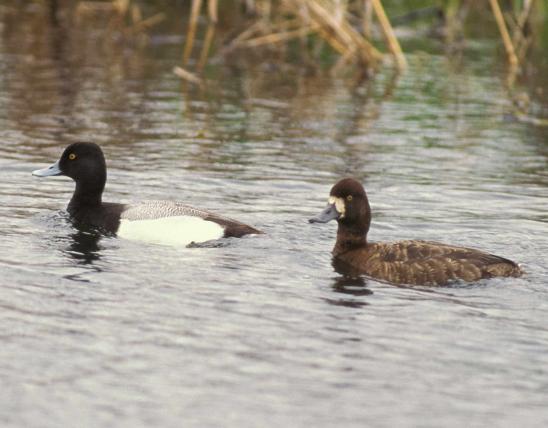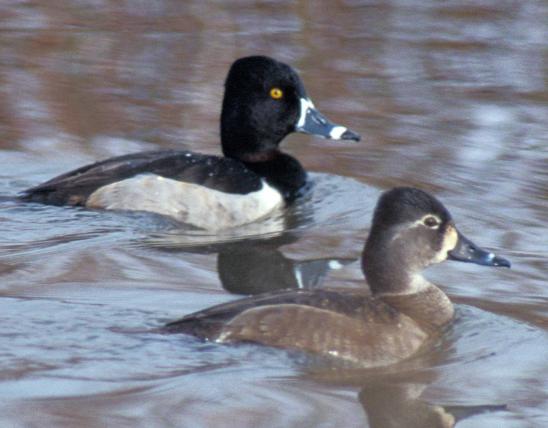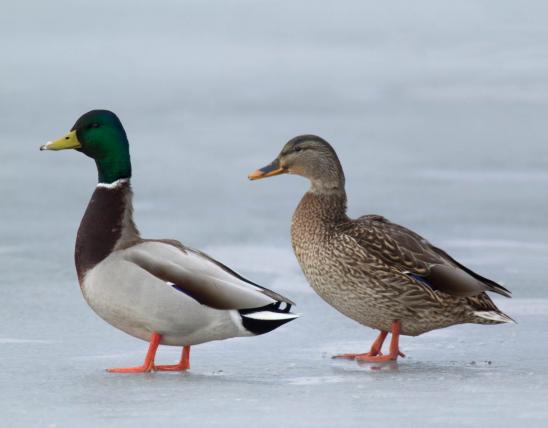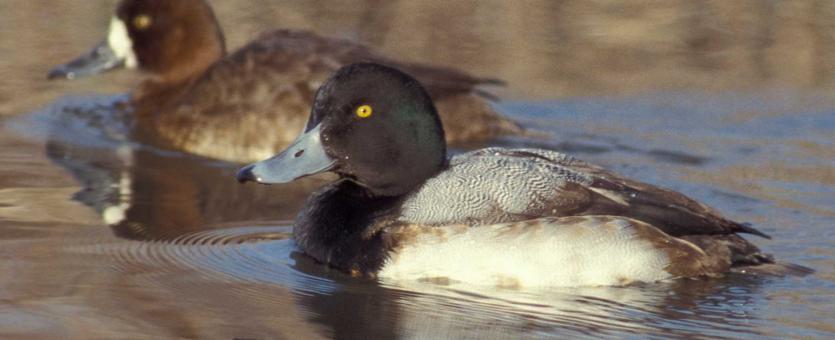
In greater scaup, the adult male’s head is rounded in profile, not angular or peaked as in the lesser scaup, and it has a green (not purple) sheen. The bill is bluish with a hard-to-see broad black nail at the tip, which is much wider than that of the lesser scaup. The white wing stripe extends into the primaries. The female is brown, with white around the base of the bill giving it a white "face," similar to the lesser scaup female. Scaups are mostly silent. The female makes a hoarse can-can-can that is lower and coarser than the female lesser scaup’s. The male is usually silent.
Similar species: The closely related lesser scaup is a common migrant in Missouri. See the paragraph above for how to distinguish between the two. Ring-necked ducks have a point or bump on the back of the head; the male has a black back, and the female a white eye-ring.
Length: 18 inches (tip of bill to tip of tail).
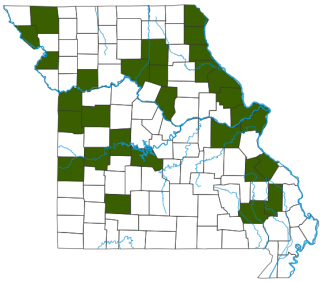
Statewide.
Habitat and Conservation
Occurs on rivers and lakes. Like other bay ducks (diving ducks, or pochards), scaups can dive completely underwater. Compared to dabbling ducks, their wings are smaller relative to their body weight. To take flight, they flap their wings and run along the surface of the water, patting their feet on the surface, gaining speed and lift until they are airborne.
Food
Like other diving ducks, scaups forage for aquatic invertebrates such as snails, crayfish, and aquatic insects, and submerged aquatic vegetation by diving completely below the surface and swimming underwater. The word scaup (pronounced “skopp”) may be related to the word scalp, akin to terms in northern European languages that mean “shell” or “shellfish bed”: In some regions, scaups feed on clams, oysters, and mussels.
Status
Rare transient and winter resident; accidental summer (nonbreeding) visitor in the northwest part of the state.
Life Cycle
Greater scaup breed in Alaska and across northern Canada. In fall, they migrate south across most of Canada and the upper Midwest and Great Plains, and along east and west coasts. Most winter along the east, west and Gulf coasts, and in a region from the southern Ozarks of Arkansas and Oklahoma and east into Georgia. In Missouri, we usually only see them in spring and fall as they migrate.
Human Connections
Birding is a tremendously popular (and addictive!) hobby. As with other activities, the fun increases as our skills improve. Learning how to distinguish between greater and lesser scaups isn't easy, so pat yourself on the back once you can identify them!
Ecosystem Connections
Although the similar-looking lesser scaup is found only in North America, the greater scaup's range is circumpolar. That means it's found all around the north pole, in both North America and Eurasia.
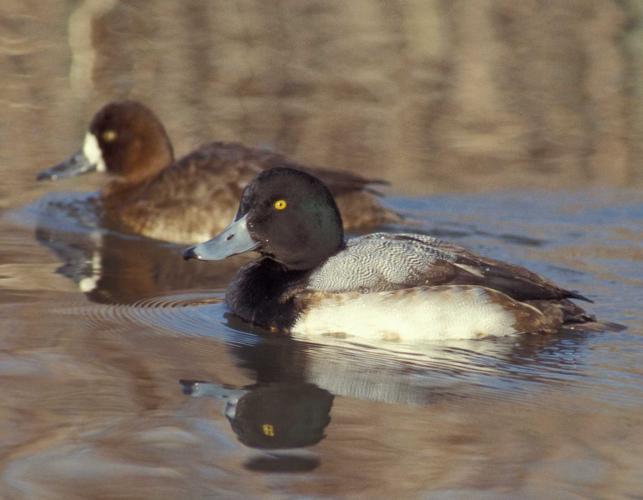
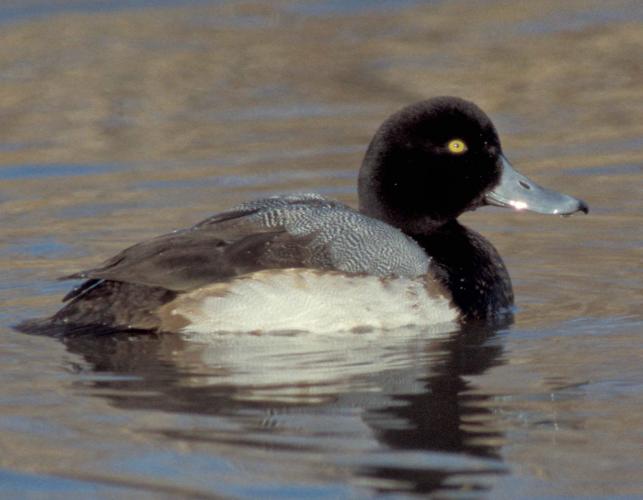
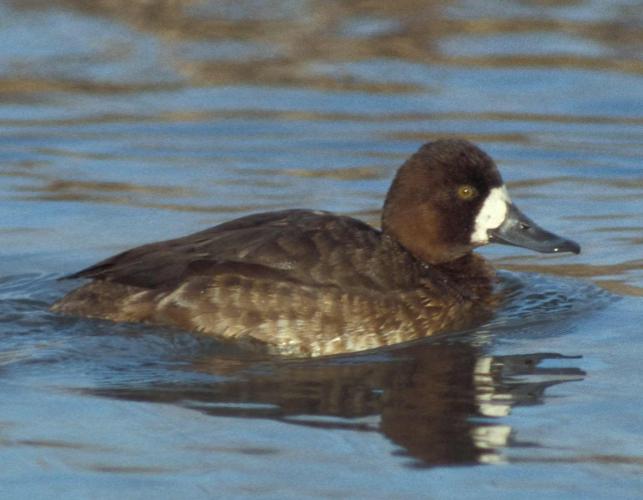
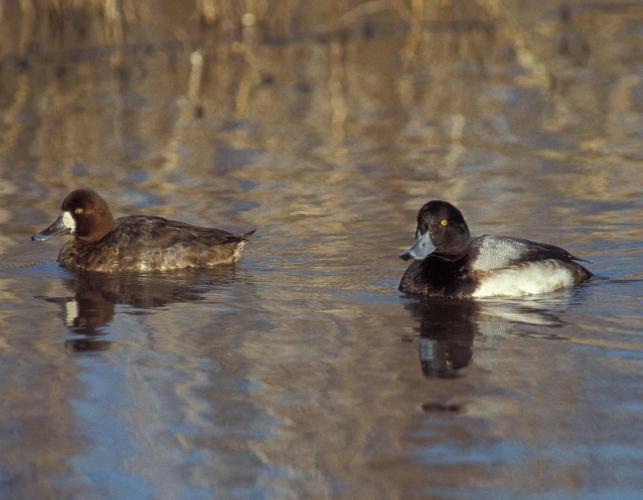
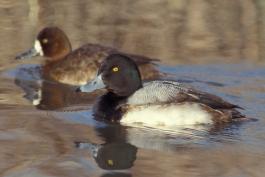
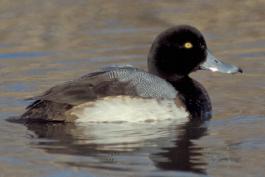
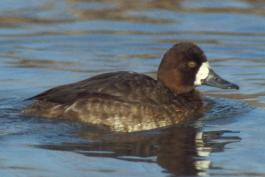
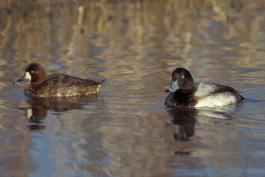
About 350 species of birds are likely to be seen in Missouri, though nearly 400 have been recorded within our borders. Most people know a bird when they see one — it has feathers, wings, and a bill. Birds are warm-blooded, and most species can fly. Many migrate hundreds or thousands of miles. Birds lay hard-shelled eggs (often in a nest), and the parents care for the young. Many communicate with songs and calls.






















